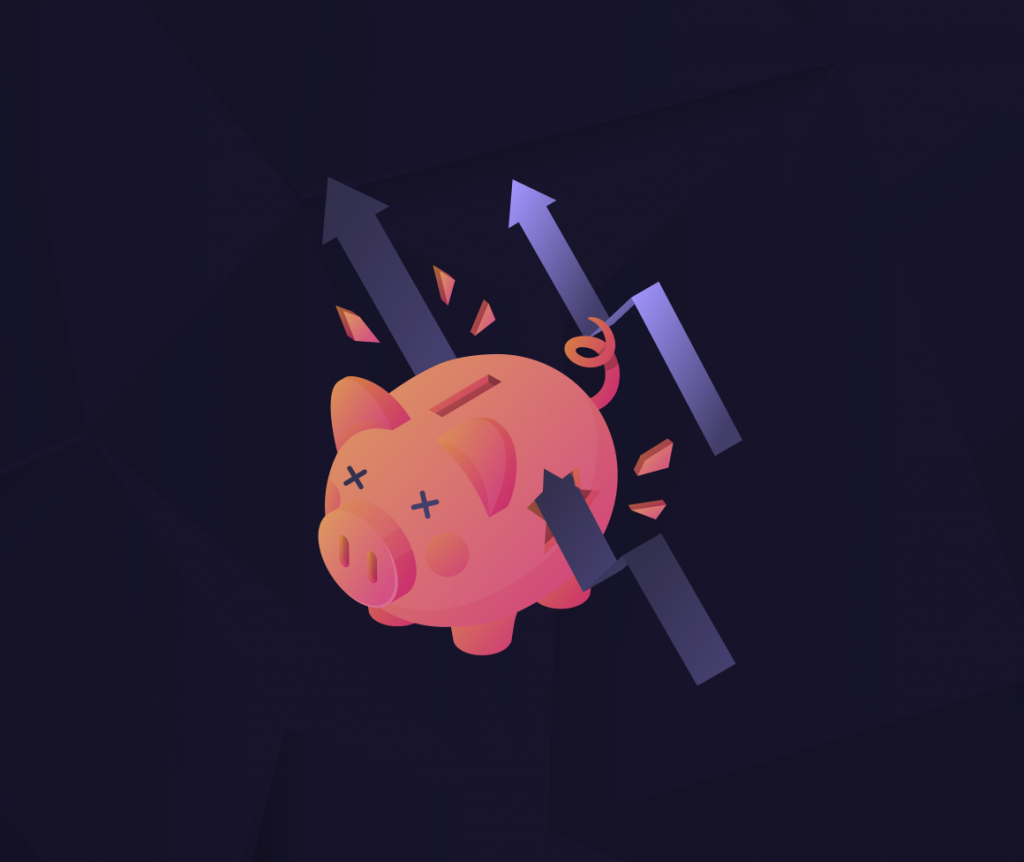The full story starts like this: there’s no “push a button, get rich” magic. Passive income still means income that’s earned – usually, monthly metrics for expenses, traffic, and adjustments get hammered out first. The reality is that affiliate marketing, like any legit business, has its bills. The upside is that even small budgets can be leveraged to reach a vast audience with low overhead, and that low risk gets even lower when the process is engineered with proven tools. The numbers look simple: set aside a budget, place the right tools in the stack first, and Hyperone’s backend lets that budget slide toward what really works instead of the budget-busting rabbit holes that lead novices in circles. The disposable lens on expenses gets swapped for a lens where adjustments get hammered out first. The reality is that affiliate marketing, like any legit business, has its bills.
The upside is that even small budgets can be leveraged to reach a vast audience with low overhead, and that low risk gets even lower when the process is engineered with proven tools. The numbers look simple: set aside a budget, place the right tools in the stack first, and Hyperone’s backend lets that budget slide toward what really works instead of the budget-busting rabbit holes that lead novices in circles. The disposable lens on expenses gets swapped for a lens that values what requires value, and the ROI is a no-brainer. Most people wait until cash is gone to realize the cycle, but a targeted, fixed monthly plan gets profit back on the books faster. Invest in what moves metrics, test less broadly but with discipline, and the curve straightens out, the growth is real, and cash starts circulating again toward the next round.
The Real Cost of Getting Started
How much does it cost to start affiliate marketing? The numbers can be very different based on who you are. If you are an individual media buyer working out of a cramped bedroom and spending all your time trying to make a living, your approach will be very different from a full-blown brand in finance or gambling verticals looking to scale ROI. That said, I still want to help you understand where exactly your cash flow is going and explain where it’s necessary. I can guide you step by step so you know what to look for and what to avoid when burning cash, and how to best utilize every cent spent. To put it in simple terms, being direct, methodical, and strategic is the biggest keystone.
Initial Setup Costs – The Price of Entry
As a business or affiliate network diving into affiliate marketing, certain “table stakes” expenses are unavoidable. The most immediate cost involves selecting a tracking platform: options range from flat monthly fees of $20–200 to performance-based models that charge a small percentage per sale – some platforms even impose both structures simultaneously. In fact, the global affiliate marketing software market is already $12.3 billion as of 2025, projected to nearly double by 2032, reflecting how critical (and sizable) this segment has become. Quality matters: overpriced and underpowered tools can bleed your budget with hidden fees, limited reporting, or poor scalability. That’s where Hyperone differentiates itself – its usage-based pricing, zero setup charges, and no hidden extras mean you pay only for what moves the needle, lowering entry friction while giving you enterprise-grade tracking.
Onboarding and Integration
Onboarding and integration can be a hidden, but substantial, cost, especially if you require custom development. Many businesses end up paying €1,000–2,000 (or more) for freelance or agency work to connect tracking platforms via APIs or embed JavaScript pixel codes. That’s consistent with broader tech integration costs; estimates show building even a simple API connection can run from $10,000 to $50,000, making integration anything but trivial. Additionally, enterprise-grade, deeply embedded integrations, considering the engineering and maintenance effort, can exceed $50,000 annually, especially when you factor in ongoing developer and support time. Contrastingly, Hyperone’s streamlined onboarding process is engineered to help teams connect without coding skills in under an hour – no dev tickets, no surprise fees, just fast, frictionless integration.
Creative Assets
Creative assets – landing pages, banners, affiliate email templates, and ad copy – are where strategy meets expression, and they deserve investment. DIY tools like Figma or Canva are excellent for startups, but many brands choose to augment or outsource to freelancers, typically via platforms like Upwork. As of mid-2025, skilled freelance designers and copywriters charge anywhere from $25 to $75 per hour, depending on expertise and geography. For a polished set of assets – say, a high-converting splash page, a few banner variations, and an email sequence – you’re looking at €300–1,500 (roughly $325–1,600), depending on complexity and revision rounds. That aligns with agency-ready rates where a single landing page can cost $500–2,000, especially if conversion optimization (A/B testing, UX feedback) is part of the brief. Investing in quality content isn’t optional – it’s one of the highest-leverage costs in affiliate marketing.
Ongoing Operational Costs
The Hidden Drain
An area in which people tend to overlook is running an affiliate program. It isn’t as simple as set-it-and-forget-it. It’s more like taking care of a high-performing piece of machinery: you’re checking for fraud, monitoring the quality of traffic, campaign management, and even optimizing the distribution of leads. All of that operational work adds up to additional costs and can be detrimental.
Real-World Impact
Now, imagine doing all of these things by hand. A two-person marketing team turns into a tech support call center, so all of those lost hours add up to lower margins, slower output, and burnout. One of our partners spent nearly €4,000 a month on slippage from fraud and process inefficiencies until they migrated to Hyperone. Plugging into our UAD system, along with advanced fraud analytics, yielded an over 80% reduction of that loss within a quarter.
That’s the benefit of automation – having peace of mind, speed, and scale. You get to redirect your energy from putting out fires to actually growing your offer. If that isn’t moving the needle, I’m not sure what is.
Allocating Resources with the Correct Tools and Platforms Employed
This is a common pitfall for many teams: overspending, or even worse, spending on too many tools. One tool for tracking, one for fraud detection, one for payouts, another for alerts… and suddenly you’re over the €1,000/month mark just to maintain a cobbled-together “Quasimodo” stack that never fully works. In fact, marketing teams typically allocate around 10% of their marketing budget to MarTech tools, while 44–56% of those tools go underutilized – a startling inefficiency that drains both money and attention. This “MarTech sprawl” isn’t just inconvenient – it’s a significant financial drain due to redundancy, disjointed integrations, and wasted subscription fees (MarTech.org).
Most of these issues can be resolved with Hyperone. Our anti-fraud layer is not a gimmicky bolt-on – it’s a core, unified component. You get real-time alert bots, multi-level dashboards filled with actionable insights (not vanity metrics), and integrations that take minutes – not days. If you’re wondering, “How can I simplify my stack and still get best-in-class functionality?”, this is the answer.
Affiliate Budget Allocation for Recruitment and Promotion
Having a great affiliate offer and platform is worthless if no one knows about it. Affiliate recruitment is its own beast – and it costs money. Many brands sink thousands into event sponsorships, affiliate summits, or highly targeted ad campaigns just to gain visibility. Others invest in more strategic tactics: exclusive bonuses, personalized outreach, or high-touch affiliate support.
Set aside a budget for recruitment – it isn’t optional. In competitive verticals like Nutra or Finance, being invisible is the same as being ineffective. For example, one of our clients ran a €2,000 LinkedIn campaign targeting affiliate managers in the e-commerce niche. The result? Eight high-volume affiliates onboarded in under two weeks, adding over €25,000 in new revenue within the first month – a remarkable 12× ROI.
If you’re asking, “What’s a good conversion rate to aim for with affiliate recruitment or promotions?”, consider this: the average affiliate program sees a 4–8% conversion rate, depending on niche and funnel position—though top programs often outperform that benchmark (Partnerize). Thoughtful recruitment, paired with strategic incentives, can dramatically accelerate visibility and ROI.
Why Affiliate Marketing is Still Worth It
Yes, setting things up requires capital, but affiliate marketing is always a risk-controlled model. You don’t need to pour money into an advertising budget that isn’t possible to see returns on. Affiliate marketing is always focused on paying for revenue-driven results. If done right, it can operate on a pay-per-sale basis where the seller captures value only when a sale is made. Marketing has few opportunities that offer that kind of assurance.
Think about the chances of hiring a fully functional outbound sales team or managing paid media on video ads. Prison advertising, giving everything into SEO, which might yield something in 12 months, or betting on delayed returns, is highly inefficient. Controlled affiliates give agility. You can test strategies, experiment with different geo-locations, and scale what works immediately.
Working with partners, like Hyperone, changes the game entirely. That level of control becomes extremely amplified. Every lead is traceable. Real or not, you get the information clean instantly. You switch from uncertainty to clarity.
Solo Affiliate vs. Business Costs
Costs differ sharply between a solo affiliate and a company-run program. A solo operator can launch lean with roughly €300–500 for a domain, hosting, and basic tracking, plus an initial test budget of €500–1,000 for paid traffic to validate offers and creatives. A business, by contrast, should expect a multi-line budget in the thousands per month covering software, fraud prevention, analytics/BI, creative production, affiliate recruitment, and at least part-time operational staff, along with legal/compliance reviews and finance operations for payouts and tax reporting. Larger teams also absorb hidden overhead – security reviews, procurement cycles, SLAs, data governance, which increase fixed costs but can lower unit costs at scale; cash-flow planning (e.g., net-30/45 payouts and reserves for chargebacks) becomes essential. Whichever path you take, tie spend to CAC/LTV targets and plan runway for several test iterations so you can reach break-even and scale with confidence.
How Hyperone Ensures You Stay on Win Street
Allow me to share a true story… A finance brand walked in with a messy stack, a 20% fraud rate, and a leaking funnel. Their skepticism was understandable – they thought all platforms operate the same. But after moving to Hyperone and setting up UAD rules designed specifically for their funnel, fraud was brought down to under 3% in a mere six weeks. Even better, their CPA improved by 30%. That’s not a change – that’s a complete turnabout.
Why? Because we don’t nickel-and-dime you. We charge a flat fee for full access. Support doesn’t charge. Response time is instantaneous with zero wait times. Integrations? No problem, effortless; every shift is instant.
Now, you focus on returns, and we take care of every little detail.
Final Thoughts – Understanding Expenses
Paid Affiliate Marketing is not some sort of black magic but rather a leverage, just as long as you are pointed at the right sets of hands.
So yeah – set aside several thousand dollars to establish a serious program. Plan to pay a few hundred additional dollars monthly for upkeep. But the cost efficiency of properly managed paid channels will always outstrip value center ad programs.
And if making the most out of it is your priority, do not cut costs on the stack. Use what is designed for performance. Designed for automation. Designed for ROI. That’s Hyperone. That’s our business.
The moment you stop guessing and start actively working is the moment we are waiting for. Let’s spend the budget in a way that it becomes an asset that brings returns repeatedly.
I’ll see you on the inside.













